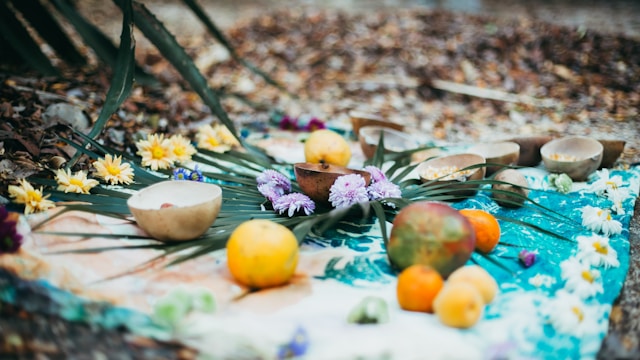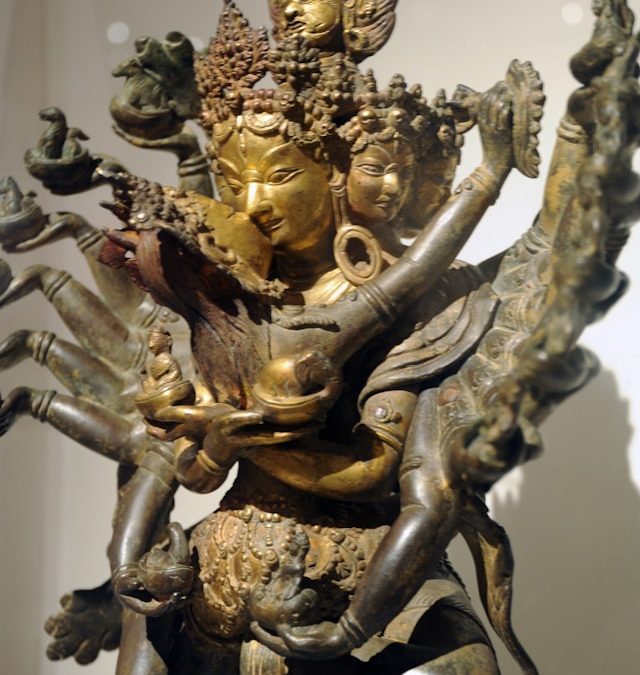Romantic relationships thrive on the delicate balance of love, trust, and connection. Underpinning that balance is a sense of stability and shared meaning between partners. Relationship rituals are an important way of helping couples create symbolic meaning and shared memories. All couples participate in rituals, knowingly or not, and they are intrinsic to being human. Rituals support couples through the hard times by promoting togetherness and meaning; and through the easy times by allowing opportunities to celebrate and play. Rituals foster richer relationships.
A ritual can be broadly defined as any activity or ceremony performed with intention or purpose that carries symbolic meaning. They are a normal aspect of life. Even animals participate in rituals: tropical birds and their courtship dances or bowerbirds building their nests, for example.
We carry out rituals every day: making our morning coffee can be a ritual; opening presents on Christmas day can be a ritual; and saying goodbye to our partner each morning before work can be a ritual. It all comes down to the quality of intention and attention brought to the activity. There are individual rituals (such as you see athletes do to pump themselves up before they take to the field), family and relationship rituals (such as a weekly date night for couples) and cultural rituals (for example, Christmas and Easter).
In the realm of romantic relationships, rituals encompass a wide range of activities, from daily routines to special celebrations, such as anniversaries or shared hobbies. What distinguishes these rituals is the intentionality and emotional investment that partners put into them, transforming mundane actions into significant markers of their relationship. For couples, rituals cultivate a sense of history and shared experience. They communicate values and vulnerability and help couples bond more deeply, The deeper the ritual the more depth in the relationship.
Rituals can be divided into four categories: celebrating, changing, healing and connecting. A connection ritual might be a romantic dinner, a celebrating ritual might be an anniversary party or surprise, a healing ritual might be some symbolic way of coming back together after a fight and a changing ritual might be a way of honouring a transition in the relationship to the family, for example to celebrate a pregnancy or when a grown child leaves the house. We can add two further types of ritual: replicative and corrective. A replicative ritual carries on the traditions inherited from family or culture while a corrective ritual is a new ritual performed to make up for the absence of a ritual or an old ritual done in a new way.

Rituals grown organically in the relationship are preferable to those imposed from the outside. Valentine’s Day is good for selling cards but puts pressure on couples to do something and may feel forced and sterile. Valentine’s Day can be generic and not meaningful to the relationship and doesn’t speak to its nature or values. I encourage couples to find unique rituals that are meaningful to their relationship rather than importing outside ideas. Developing these rituals together, within the boundaries of the couple bubble, helps couples develop shared language and meaning.
One couple I worked with had a beautiful ritual of always lighting a candle together at the dinner table when they sat down to eat. Although very simple, the ritual spoke to the sacred nature of eating and the intentionality of coming together each night and sharing food.
Another couple had a ritual of taking a photo of their feet on the sand or upon the earth whenever they travelled overseas to a new country.
Rituals can be grand or humble. They can be extensive or performed in a minute or two. They can be deep and meaningful or light and playful.
Reach out to learn more about couples therapy and how we can help you and your create rituals of intimacy and connection.

